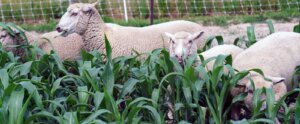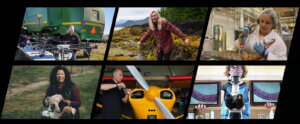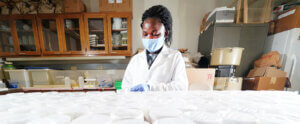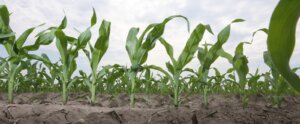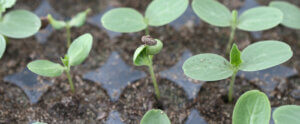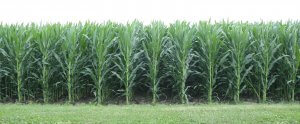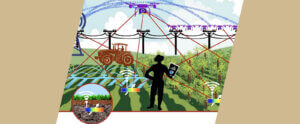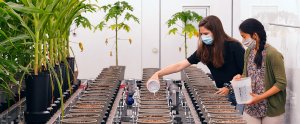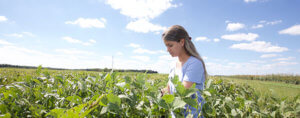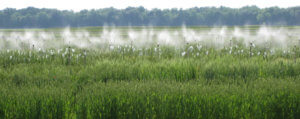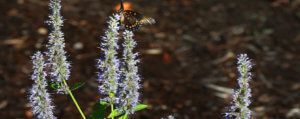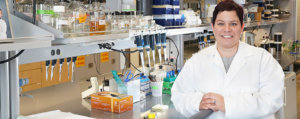Site Archive
Sorghum is a great crop for grazing, but certain conditions can cause the plants to become deadly for animals. Purdue University’s Mitch Tuinstra has developed a sorghum that contains no dhurrin, reducing the risk of poisoning in the animals.
READ MOREAdebukola Dada grew up on a Nigerian farm where her father raised various plants and animals. “If our crops did not do well, I asked my dad to tell me why,” Dada recalled. “That’s up to you to figure out,” her father replied. Now a Ph.D. student in agronomy, Dada is on her way to finding the answers.
READ MORE“Several years ago, I organized a soybean field day at the Agronomy Center for Research and Education (ACRE),” recalled Marshall Martin, professor of agricultural economics, the senior associate director of agricultural research and graduate education and assistant dean in the College of Agriculture.
“There were funny-looking plants growing in one of the soybean plots that I didn’t recognize. It looked like some kind of weed or vine on the ground— something that you’d plant as a ground cover around the front of your house. The plants had small pods with only one or two flat, black seeds each. They were soybeans.”
READ MOREThe COVID-19 pandemic is forcing many aspects of life on the Purdue campus to change. Faculty and graduate students are rising to the challenge, redesigning lab courses in creative and innovative ways.
READ MOREAs interest in “forever chemicals” increases, a Purdue group in Discovery Park’s Center for the Environment emerges as a preeminent team researching them.
At first glance, a pizza box, raincoat, nonstick pan and firefighting foam don’t have much in common. But a group of researchers in the Center for the Environment at Purdue wants us to understand that in using these seemingly unrelated products, we introduce chemicals into the environment that may linger for millennia — and in the shorter term, affect animal and human health.
Purdue Extension and United States Department of Agriculture (USDA) experts gathered virtually on Wednesday (Aug. 12) to discuss the results of the 2020 USDA crop report and the current status of Indiana’s major cash crops.
READ MOREPurdue University will be a partner in a new National Science Foundation (NSF) Engineering Research Center created to develop advanced agricultural technologies to address food, energy and water security challenges.
With a five-year, $26 million grant, the NSF has established the Engineering Research Center for the Internet of Things for Precision Agriculture (IoT4Ag). Engineering Research Centers (ERCs) are NSF’s flagship engineering program for convergent research to address large-scale societal challenges.
READ MOREStaff in IPIA and Food Sciences worked behind the scenes this spring to ensure 11 international interns’ well being and repatriation.
Ada Camila Montoya Gomez, a senior in environmental engineering at Zamorano University in Honduras, was deep into three research projects at Purdue this spring when safety concerns around the coronavirus closed the university.
READ MOREThe College of Agriculture accounted for more than a third of Purdue researchers who asked for access and support to continue critical research when facilities closed this spring.
With about 15 wiliwili trees in the Lilly Greenhouses, and only 150 left in the wild after an insect pest decimated its population, Purdue oversees an important concentration of this deciduous tree native to Hawaii. Scott McAdam, assistant professor of botany and plant pathology, has been growing the trees for three years.
READ MORE“Ben Carter is an outstanding servant leader for the Purdue Ag Alumni Association and the College of Agriculture,” said Karen Plaut, the Glenn W. Sample Dean of the College of Agriculture. “He is always there to lend a helping hand, whether it is at alumni events, the state fair, or helping to advocate for agriculture. He can be counted on to deliver in all circumstances and does it with a smile.”
READ MOREStephen Schwartz experienced a bizarre sense of deja vu in his final weeks at Purdue, finding them oddly similar to his high school years: finishing his degree online while at the top of his class. However, Schwartz admits his satisfaction at being selected for the 2020 G.A. Ross Award as the top male student in Purdue’s graduating class of roughly 8,000 students outshines his accomplishments in his homeschool class of one.
READ MORELet’s do that again!” thought Alyson Chaney and Peyton Clark as they stood on stage holding a $10,000 check. On March 27, 2019, after a challenging eight-month competition hosted by the Indiana Soybean Alliance, the pair was already planning their next moves.
READ MORESince 2003, 14 of the 36 G.A. Ross and Flora Roberts Award winners have been from the College of Agriculture. Justin Couetil, a biochemistry student, won the G.A. Ross Award in 2019. Cameron Mann won the Flora Roberts Award in 2017, representing agricultural communication and agribusiness.
READ MOREHerb Ohm had no intention of retiring in 2014. He still had work to do and, by his own calculations, he’d be in the field and lab for at least another three years when he would turn 70.
After earning his doctorate under famed Purdue wheat breeder and agronomist Fred Patterson, Ohm joined the Purdue faculty in 1971, eventually becoming the leader of the wheat-breeding program when Patterson retired in 1986. One of Ohm’s specialties was crossing wheat with wild and exotic species that contained genes long left behind by those who had cultivated modern wheat varieties. The hope was that those exotic species have natural genetic resistance to pests and diseases.
READ MOREAbout the feature Many people are involved in the remarkable range of programs, services and facilities that undergird research in the College of Agriculture. Collectively…
READ MORE